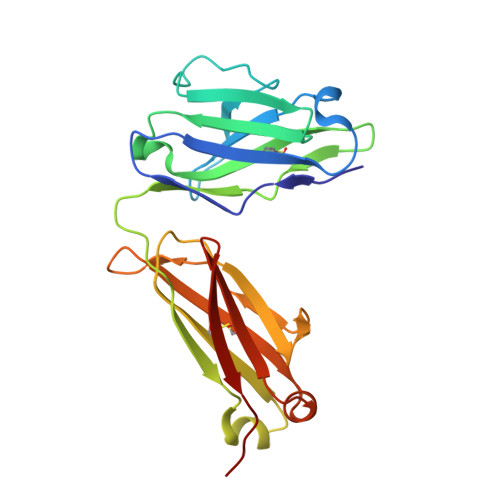A human anti-IL-2 antibody that potentiates regulatory T cells by a structure-based mechanism.
Trotta, E., Bessette, P.H., Silveria, S.L., Ely, L.K., Jude, K.M., Le, D.T., Holst, C.R., Coyle, A., Potempa, M., Lanier, L.L., Garcia, K.C., Crellin, N.K., Rondon, I.J., Bluestone, J.A.(2018) Nat Med 24: 1005-1014
- PubMed: 29942088
- DOI: https://doi.org/10.1038/s41591-018-0070-2
- Primary Citation of Related Structures:
5UTZ - PubMed Abstract:
Interleukin-2 (IL-2) has been shown to suppress immune pathologies by preferentially expanding regulatory T cells (T regs ). However, this therapy has been limited by off-target complications due to pathogenic cell expansion. Recent efforts have been focused on developing a more selective IL-2. It is well documented that certain anti-mouse IL-2 antibodies induce conformational changes that result in selective targeting of T regs . We report the generation of a fully human anti-IL-2 antibody, F5111.2, that stabilizes IL-2 in a conformation that results in the preferential STAT5 phosphorylation of T regs in vitro and selective expansion of T regs in vivo. When complexed with human IL-2, F5111.2 induced remission of type 1 diabetes in the NOD mouse model, reduced disease severity in a model of experimental autoimmune encephalomyelitis and protected mice against xenogeneic graft-versus-host disease. These results suggest that IL-2-F5111.2 may provide an immunotherapy to treat autoimmune diseases and graft-versus-host disease.
Organizational Affiliation:
UCSF Diabetes Center, University of California, San Francisco, San Francisco, CA, USA.


















